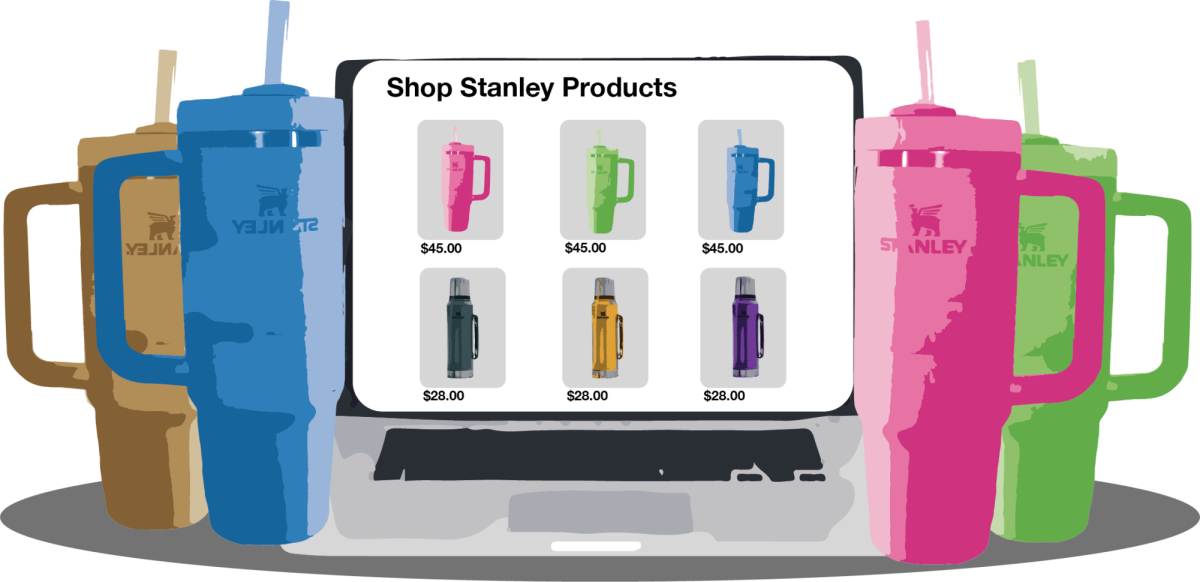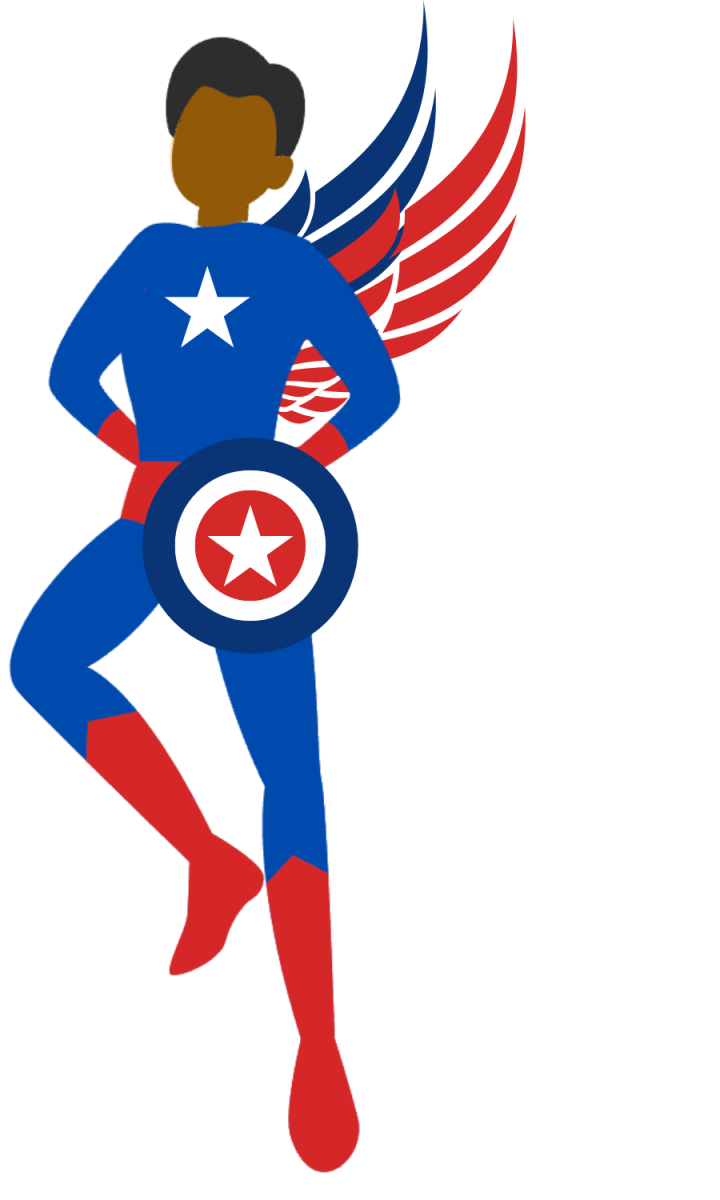In a frenzy of flying elbows and frantic shoving, contenders were trampled amidst the chaos. After a long-worn battle, a select few emerged victorious, raising their Stanley Cup in triumph. The cup – not the trophy awarded to the winner of the National Hockey League, but a $45 limited edition Valentine’s Day release exclusively found at Target – would sell for five times its retail price mere hours later.
This rampage in El Paso, Texas is not an isolated incident. Highly sought after and regularly sold out across America, Stanley Cups have become the epitome of modern hydration, blending the relationship between accessibility and fashion.
Founded 111 years ago, Stanley 1913 originally provided reusable insulated beverage containers to American, male blue-collar workers and those participating in outdoor activities. Over a century later, in 2017, its rugged image and consumer demographic underwent a drastic metamorphosis.
Small blogs and influencers introduced the Stanley Cup to mainstream social media platforms, where they would promote the bottle to consumers as part of Stanley’s affiliate program. The strategy worked, as, according to Forbes, the product amassed over seven billion individual impressions on TikTok alone.
Capitalizing on this sudden digital success, Stanley parlayed the release of its top-selling 40-ounce Quencher into a self-reported $750 million in revenue in 2023, up from $73 million in 2019.
“It’s not a water bottle anymore,” University of Central Florida Associate Professor of Marketing Anand Krishnamoorthy said. “It’s become a fashion statement.”
In adapting to a broader consumer market, Stanley shifted beyond the typical male blue-collar worker and toward avid online shoppers, particularly women. Gearing their marketing strategy towards this new audience, Stanley introduced cups with vibrant colors and positioned itself as an affordable, non-luxury fashion statement.
Since then, it has garnered a cult-like following among women of all ages, permeating realms ranging from Facebook Group Chats to high school classrooms.
“I came here last year from Winter Park High School and I didn’t really know anybody,” Swift said. “These cups actually ended up really helping me make friends here, because people would always start conversations with ‘Oh, I like your cup.’”
While the cups offer camaraderie for Swift, others are drawn to their exclusivity. Commonly purchased as collectors’ items, Stanley offers dozens of colors associated with seasonally-timed limited releases that artificially increase the bottles’ demand, further enhancing their allure. Despite Stanley’s decision to provide a lifetime warranty for all of its hydration products, this strategic approach has not only sustained but also bolstered Stanley’s market value over time.
“Limited edition products signal high quality, so people are not buying one [water bottle], they’re buying five, 10, 15 different colors to display on the shelf,” Krishnamoorthy said. “But if you buy 10 different bottles because they have 10 unique colors, that defeats the purpose of reusable water bottles.”
According to a study conducted by Nestlé, it takes between 10 to 20 uses of a reusable steel water bottle to offset the environmental impact associated with its production. However, in the case of Stanley Cups, since many consumers primarily use them as a collectible and fashion item rather than utilizing them for their intended purpose, their contribution to environmental sustainability remains minimal.
To combat this, Stanley recently committed to making at least 50% of their stainless steel products from recycled materials by 2025. However, the effects of this change may be null and void, as the surge in popularity of the cups has spurred the production of environmentally harmful accessories. These additions, including plastic lids and sleeves, contribute to increased plastic consumption and environmental degradation.
“The notion of greenwashing is prevalent here,” Krishnamoorthy said. “Companies know that there is value in presenting as environmentally-conscious as possible to appeal to the consumer, even when they are not.”
This facade presented itself as difficult to maintain after increasingly viral social media posts recently suggested trace amounts of lead were infused in Stanley Cups during the production process. While Stanley received negative publicity from this bombshell, consumers did not halt in their never-ending thirst to acquire the products.
As fashionable water bottles continue to reach new heights of popularity, their pervasiveness in the face of cyclical trends and questions regarding their intrinsic value are at the forefront of consumers’ minds.
“If everybody’s carrying a Stanley around, why should anybody carry one at all?” Krishnamoorthy said.
















